Day 2 Challenge : Negative Painting
Hello again, and Welcome to Day 2 of my Watercolor Challenge!
Yesterday, we looked at two of the most important features of watercolor:
it’s water-based… and it’s transparent.
We explored how watercolor’s transparency lets you build up color in layers — and how the light shines through those layers, unlike thicker paints like gouache or acrylic, which sit on the surface.
Today, we’re going to build on that idea — and take it one step further.
Because here’s the thing about watercolor:
You can’t paint white.
There’s no white watercolor paint that’ll give you nice fresh, clean-looking whites..
Instead, you have to preserve the white of the paper – and you do that by simply not painting it!
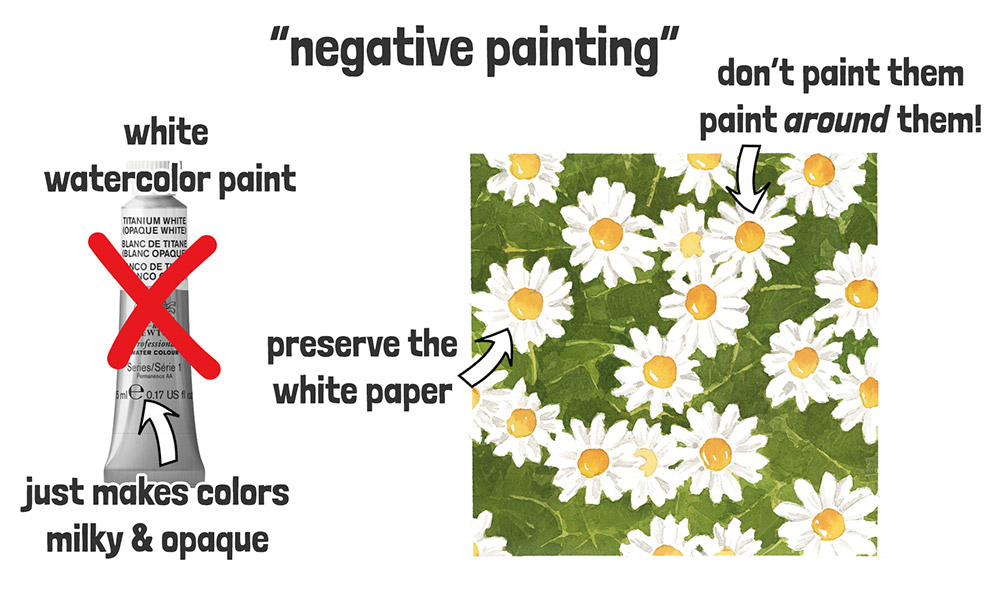
Sounds a bit backwards, doesn’t it?
And that’s exactly why the technique I’m going to show you is called negative painting!
In this challenge you’ll be painting some white daisies – but instead of painting the flowers themselves, we’ll paint around them.
Because watercolor is transparent, the light paper underneath stays visible. And by using darker colors to shape the space around the petals, the light areas start to shine through – even though you haven’t touched them with your brush.
It’s a bit like sculpting with paint – using contrast to carve out the shape of your subject 🙂
This way of working might feel a little counterintuitive at first – especially if you’ve painted in other mediums before. But once you get the hang of it, it opens up a whole new way of seeing. And after a while, it’ll start to feel more natural… In watercolor, what you leave out is just as important as what you paint.
Ready to give it a go?
Let’s paint some daisies!
Now it’s your turn — here’s how to practice negative painting:
Layer 1
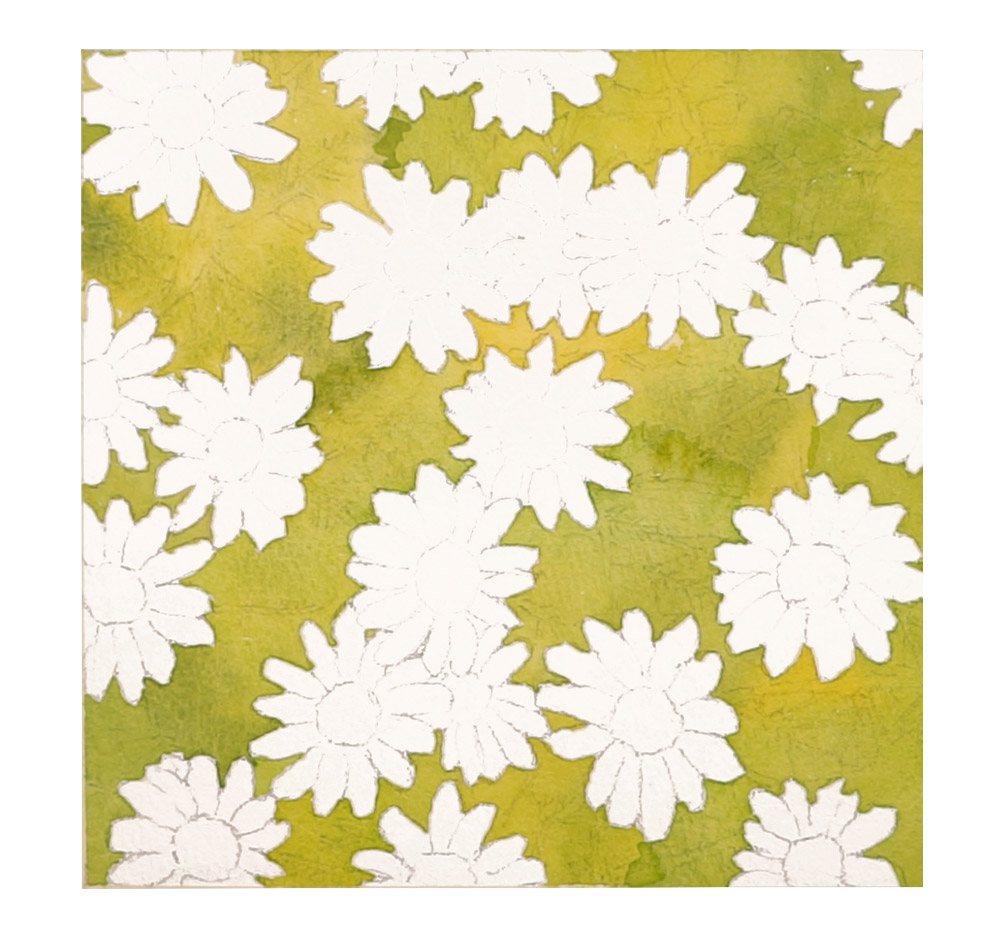
Download all of the reference images for this painting, then start by sketching the outline of the daisies onto a sheet of watercolor paper.
Then tape your paper onto a flat board, using low-tack masking tape and create a border around your area you’re going to paint. This will give you a clean, crisp edge to help frame the finished painting.
Now mix up a fairly diluted yellow-green color – and instead of painting the flowers themselves, you’ll be painting the background around them. Leave the flowers untouched, letting the white of the paper shine through.
The colors I used for this painting were:
- Hansa yellow deep
- Pyrrol scarlet
- Phthalo green : BS
- French ultramarine
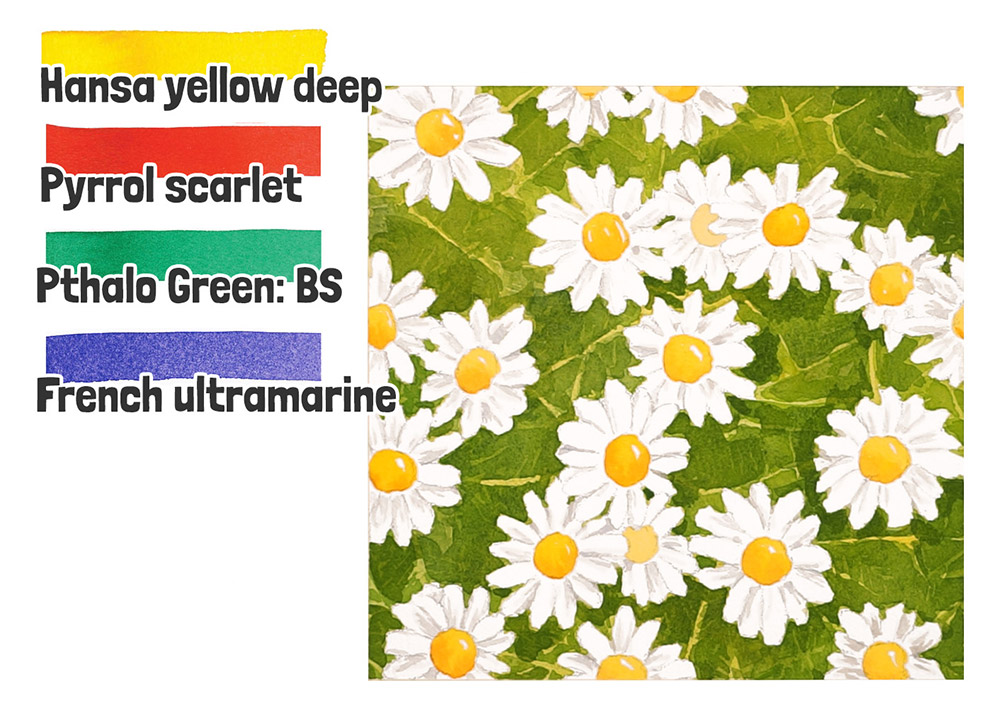
You’ll find that Hansa Yellow mixed with Phthalo Green gives you a lovely, natural-looking green color. And to darken your greens later on, just add a touch of French Ultramarine. And the red comes in handy for mixing an orange color to finish off the center of the daisies.
Once you’ve painted some of the background, try dabbing a bit of stronger green into the wet paint – this wet-on-wet effect creates a nice blend of colors and makes it look a bit more natural.
Keep going like this until the whole background shape is filled in. Focus on carefully painting around the daisy shapes — in a way, you’re using the background color to “carve out” the forms of the flowers. Basically, you’re painting the negative shapes around the daisies.
This is what you should end up with at the end of this first layer
Layer 2
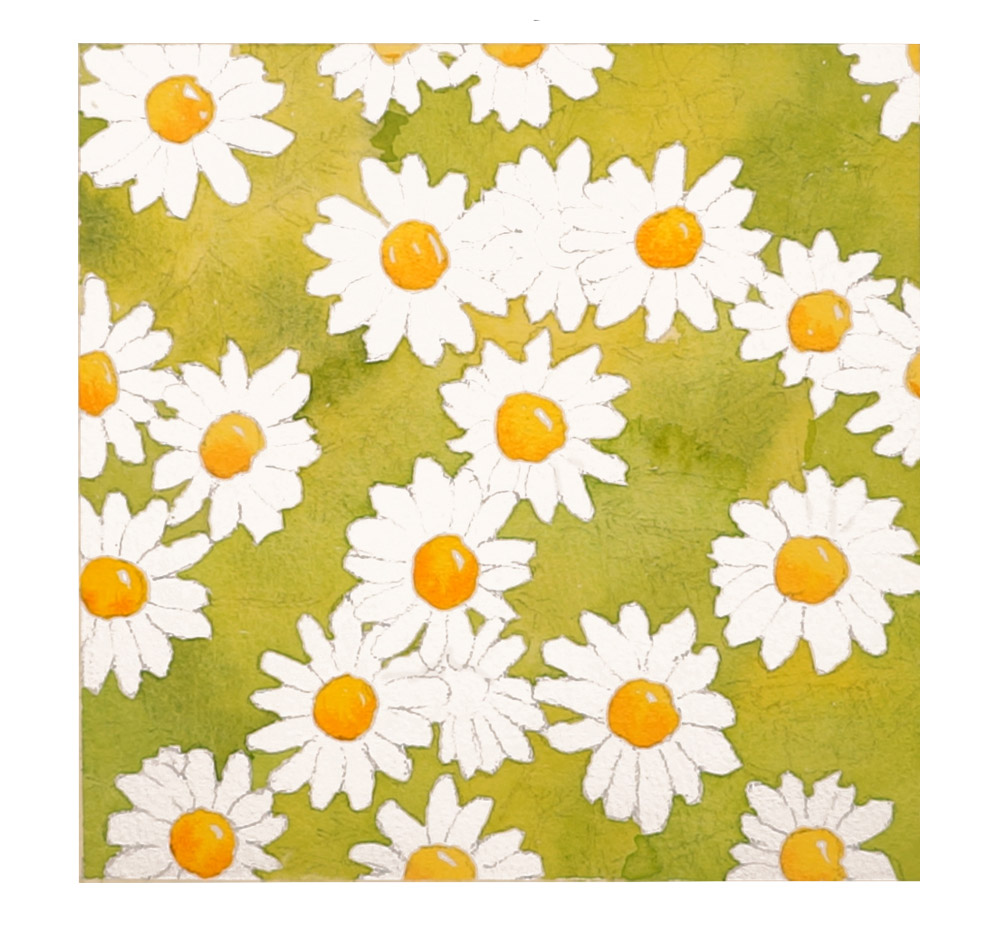
After that, I painted the center of the daisies with a mix of pure yellow. And just to make them a bit more interesting, I dabbed in a bit of orange to the bottom of each one while the paint was still wet.
In a way, you’re still painting the negative shapes – those round yellow centers help define the white petals around them, just like the background did.
Layer 3
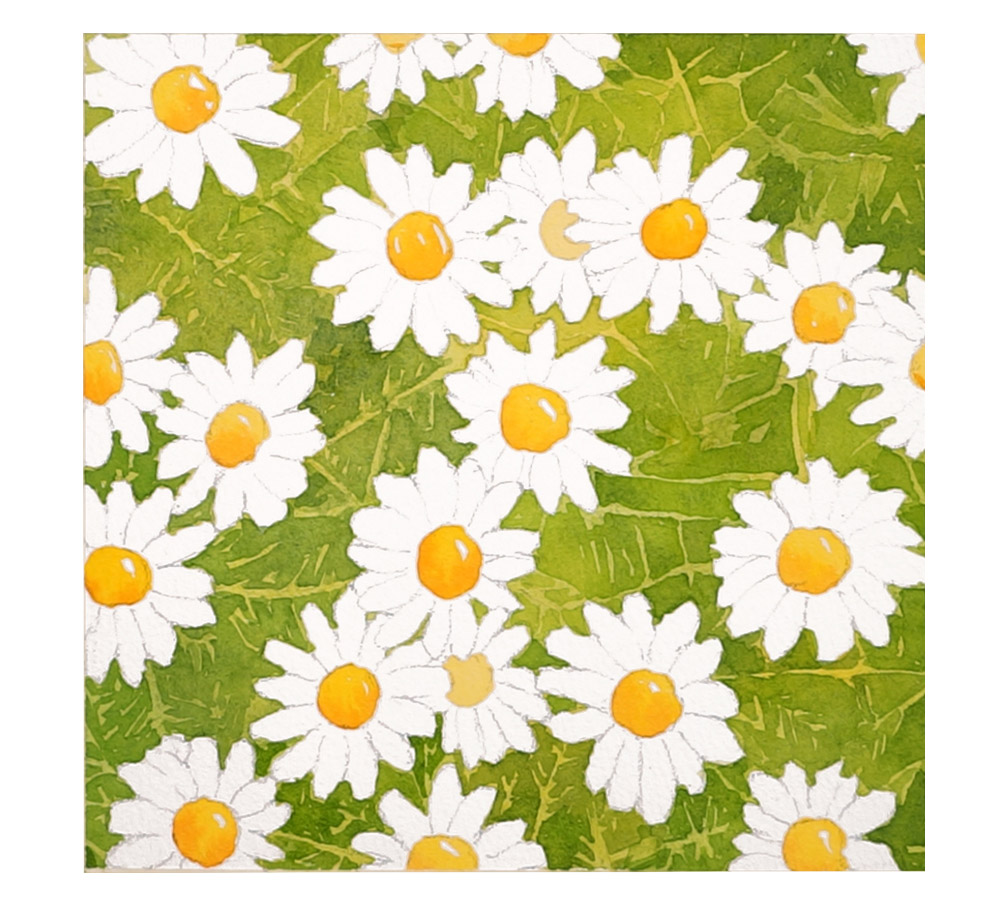
Let the paint dry completely so you don’t accidentally smudge your work – then go in with a slightly darker green to build up the background, still focusing on those negative shapes around the petals.
Now, notice what’s happening here: I’m painting negative shapes within negative shapes!
If you look at the reference image (included in the downloads), you’ll see that the green background behind the daisies isn’t just one flat color — there are lighter stalks and leafy shapes in front, and darker greens further back.
That’s why, in this layer, I’m painting around those lighter areas to leave them untouched. It helps suggest the lighter stems and shapes that sit in the foreground.
And don’t worry about making them look perfect — the aim is to paint in a loose, slightly random way, to create a pattern that gives the impression of leaves and stems.
You should end up with something looking like this:
Layer 4
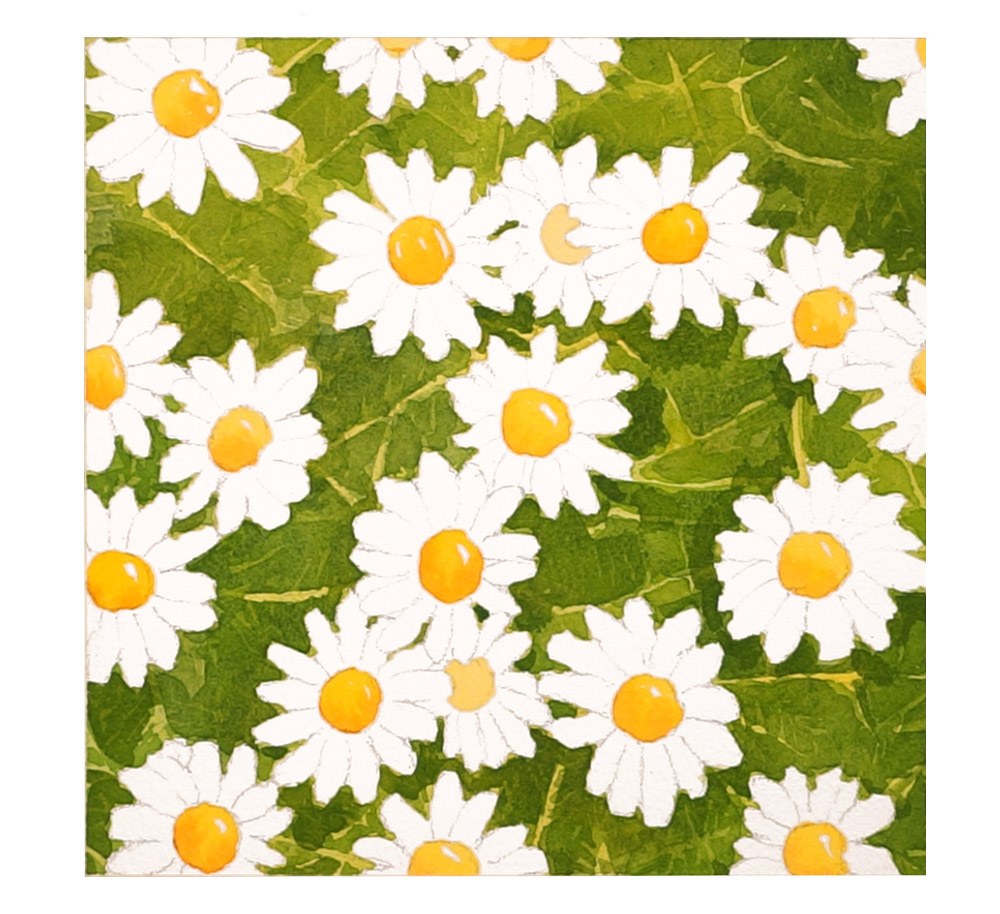
Before we move on, let everything dry completely. Remember we’re still using a “glazing” technique and layering transparent color to gradually build up depth and darken the background.
This time I added another layer of patterned shapes, but bigger ones to suggest some of the larger stalks in the foreground. By doing that, the finer, more delicate shapes from earlier get pushed back slightly — they stay visible, but appear to sit further into the background because they’re now a bit darker.
Here’s what my painting looks like at the end of this stage:
Layer 5
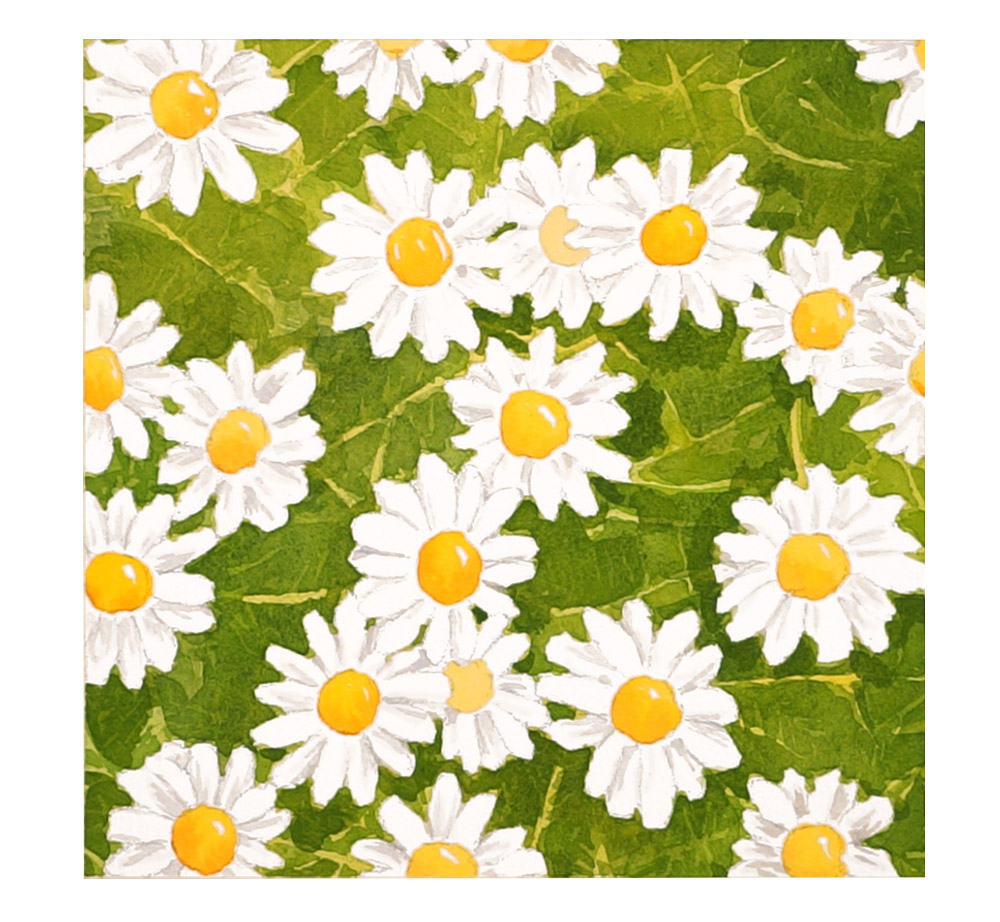
The final step was just to add a few fine details on the petals of the flowers using a very diluted grey mixture. You mix this by combining red and french ultramarine, or if you have one, use a ready-made grey paint color.
And here’s the finished painting…
Key Takeaways
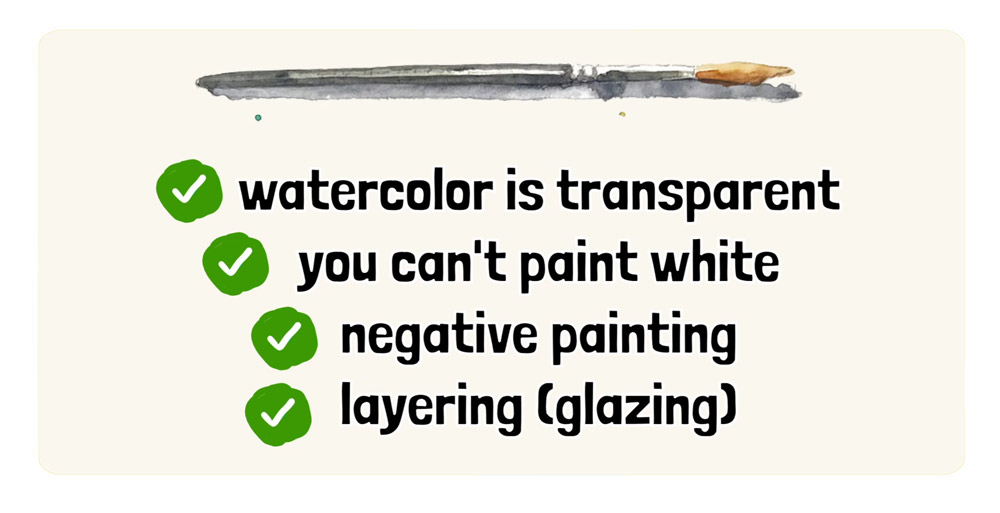
So… here’s a summary of what we’ve learned:
- Watercolor is transparent — that means the light shines through the paint and bounces off the paper underneath.
- You can’t paint white in watercolor — so you have to preserve it by leaving areas unpainted.
- Negative painting means painting around your subject, not the subject itself.
- And just like in the first lesson, we’re still using glazing – layering transparent washes to gradually build depth and contrast.
In the next challenge…
So far, we’ve been exploring watercolor’s transparency…
But that’s only part of the picture.
Because with watercolor, it’s not just the paint you need to manage… It’s the water.
So in the next lesson, I’ll show you how controlling the flow of water on the page can create some of watercolor’s most beautiful effects! You’ll start to see why so many artists fall in love with watercolor.
See you in the next lesson!
Want to Learn More about Watercolors?
If you’re enjoying this and want to dive a bit deeper, I’ve got more step-by-step courses designed to help you grow your watercolor skills:
- The Watercolor Masterclass for Beginners – A flexible, self-paced course that helps you paint beautiful watercolors – without wasting years on trial and error.
- Successful Color Mixing – the guide to effortless color mixing with watercolors.
- Secrets to Water Control – Struggling with water control? There’s a method behind the magic!
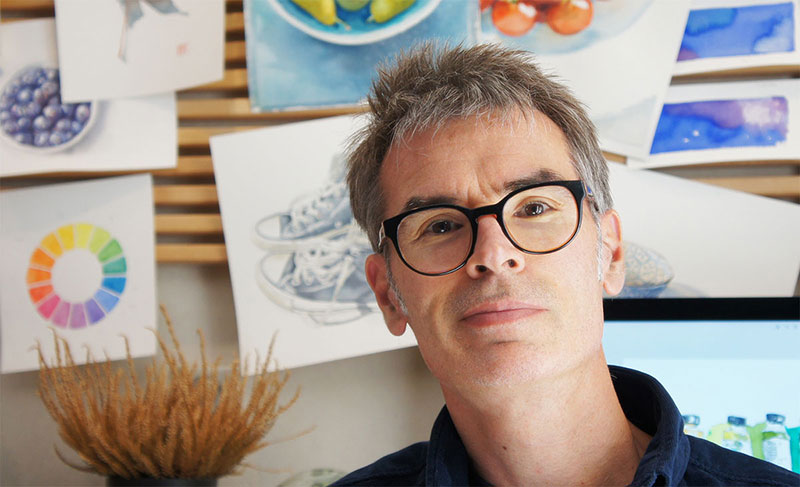
Looked a bit unrealistic and mine resembled fried eggs rather than daisies lol, but the take away is a very good lesson in negative painting to bring a subject to life.
Haha, I love that — fried egg flowers! Honestly though, that’s part of the fun. Even if the result isn’t quite what you imagined, you nailed the important bit: practicing negative painting…